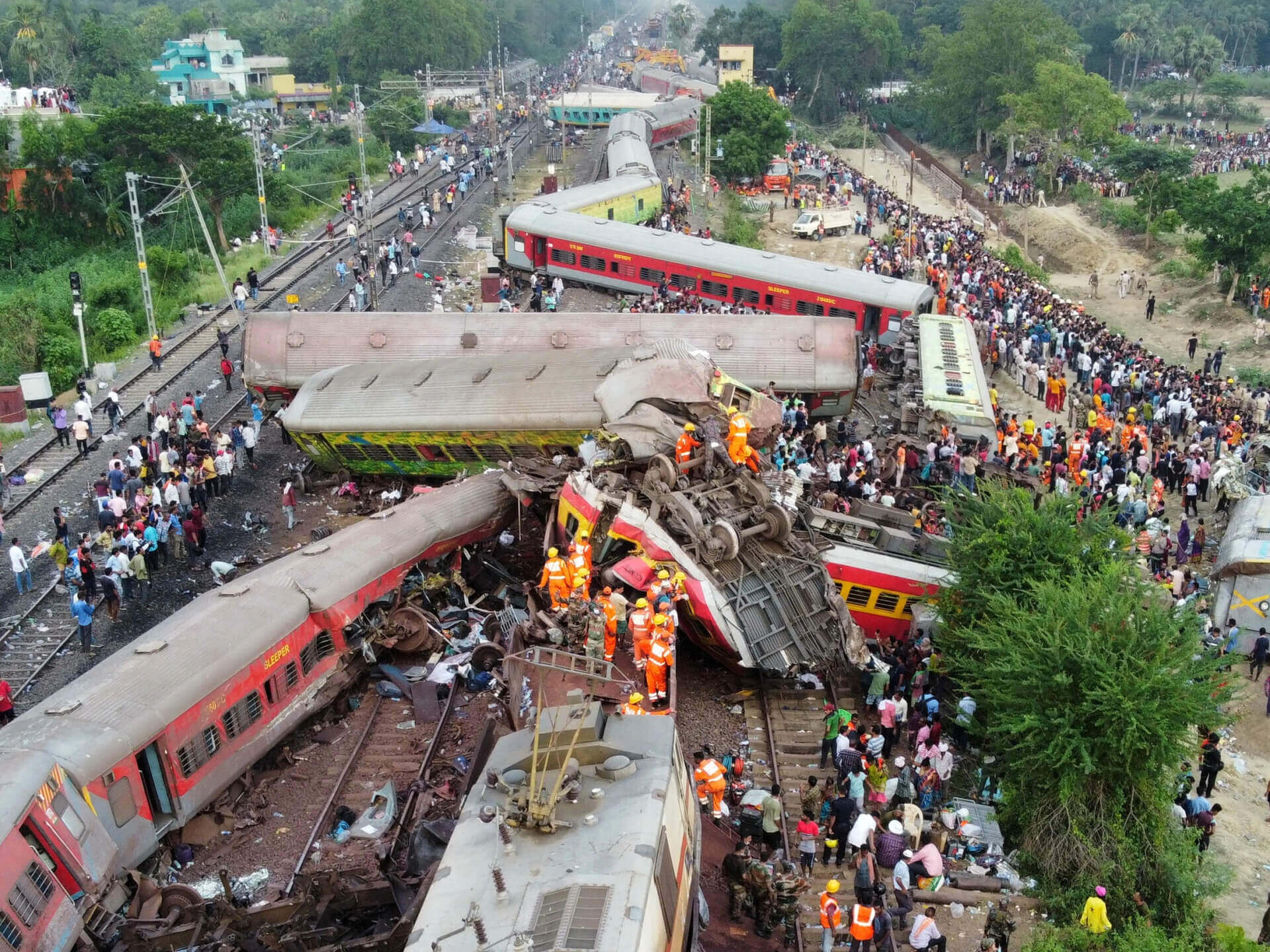The Indian railways have for years been the “lifeline” of the country, making long and short-distance travel affordable and accessible for all strata of society. While some view it as a mode of transportation, the industry employs millions in organised and unorganised sectors. Be it supplying essentials during the COVID-19 pandemic or allowing access to resources in all parts of the country, the Indian railway has been the backbone of India’s economy and society since its inception.
In light of this, disasters such as the one in Odisha carry a weightier significance as safety lapses have the potential to jeopardise the lives of millions every day. While the incident's devastation is regrettable, it serves as a catalyst for driving the overhaul of India's railway system, aiming to modernise, strengthen, and enhance the security of rail travel throughout the country.
The Coromandel Express accident, which occurred on Friday evening, stands as the deadliest rail incident in India in the past two decades, resulting in 275 fatalities and 1,200 injuries. The incident involved the derailment of 21 compartments, subsequent collision with the Howrah Superfast Express and a stationary goods train carrying iron ore.
Locals helped medical and other rescue personnel in their 18-hour-long operation.
Authorities are investigating the chain of errors that led to the tragic accident. Preliminary reports indicate that the accident was triggered by a malfunction in the electronic interlocking system, responsible for determining the train's designated routes.
A devastating train crash raises questions about railway safety in India https://t.co/LESzXUYVjb pic.twitter.com/k57pL6K3F9
— TIME (@TIME) June 5, 2023
Later in a press conference, railway authorities confirmed a “signalling interference” that could have led to the accident. However, whether it was a manual error, incidental, weather-related, or maintenance issue is unclear.
While speculation continues, the exact cause of the incident can only be determined after an extensive inquiry. The Railway Board has urged the probe of the accident to be given to the Central Bureau of Investigation.
While families continue to mourn the loss of their loved ones, the incident has shed light on the alarming statistics of railway accidents, claiming thousands of lives in India. The significant number of fatalities has exposed the budgetary and infrastructural challenges within the Indian railways, which have witnessed numerous similar incidents recently.
For instance, in November 2016, 146 people died, and 200 were injured after a passenger train derailed between Indore and Patna. Another derailment occurred in July 2011 caused 68 deaths.
Dismayingly, derailments account for a substantial portion of the incidents. According to the Indian government's railway safety report for 2019-2020, derailments were responsible for 70% of railway incidents, with a similar figure of 68% in the previous year. In contrast, collisions contributed to 8% of the incidents.
As per the report, during the period of 2019-2020, a total of 40 derailments were recorded, with 17 of them attributed to "track defects," including fractures and other related issues. Additionally, nine derailments were caused by problems arising from the engines, coaches, or wagons of the trains.
This highlights the importance of regular maintenance, which is critical for rai tracks because they undergo regular expansions and contractions each year as temperatures change. They also require frequent tightening of loose components, lubrication, and changes in damaged parts.
The conclusions of the CAG report are briefly summarized below:
— Saket Gokhale (@SaketGokhale) June 4, 2023
👉 There are glaring holes in risk-control systems of Indian Railways
👉 Systematic mechanism for monitoring procedures to prevent serious rail accidents was missing
(2/7) pic.twitter.com/HyWbaqeqEU
While issues with tracks are meant to be identified during regular maintenance checks, inspections are irregular. A report by government auditors investigating derailments said that between April 2017 and March 2021, inspections had shortfalls “ranging from 30% to 100%. A major cause of derailments was identified to be the maintenance of tracks.
In a departure from previous accidents of a similar nature, the recent disaster has garnered significant public, media, and political attention, focusing on the administrative operations of the railways that led to the derailment. This incident has brought the frequency of such occurrences in India into the limelight, underscoring the looming possibility of another incident akin to the one in Odisha.
Just two days after the Coromandel Express incident, a goods train derailed in Odisha. On Tuesday, the New Delhi-Bhubaneswar Rajdhani Express also averted a major accident after the driver applied breaks and prevented crashing into a broken-down tractor.
Globally, railway accidents of this nature frequently face substantial criticism, with opposition parties and civil society advocates calling upon the government to implement policy reforms to improve safety measures.
For instance, in Greece, a deadly train collision in February caused 57 deaths, instigating protests and calls for action. At the time, both Prime Minister Kyriakos Mitsotakis and Transport Minister Kostas Karamanlis admitted the crash resulted from a systemic problem in the railways.
The acceptance of blame and acknowledgement of a bigger issue within the railways directly resulted from the outcry, which forced the government and the judiciary to introspect and take action.
In line with the efforts seen in Greece, it is imperative for the Indian civil society, political entities, and the general public to join forces in advocating for the identification and rectification of issues within the railway system. With a staggering 3 billion passengers relying on a colonial-era infrastructure plagued by undeniable infrastructural and operational deficiencies, the risk of a recurrence of such a catastrophic event cannot be ignored. This incident serves as a crucial opportunity for the Indian public to assertively demand a comprehensive overhaul of the national railway network, which extends to even the most remote corners of the country, connecting millions of lives each day. Only through collective action can the necessary reforms be achieved, ensuring the safety and well-being of all those who rely on this vital mode of transportation.

